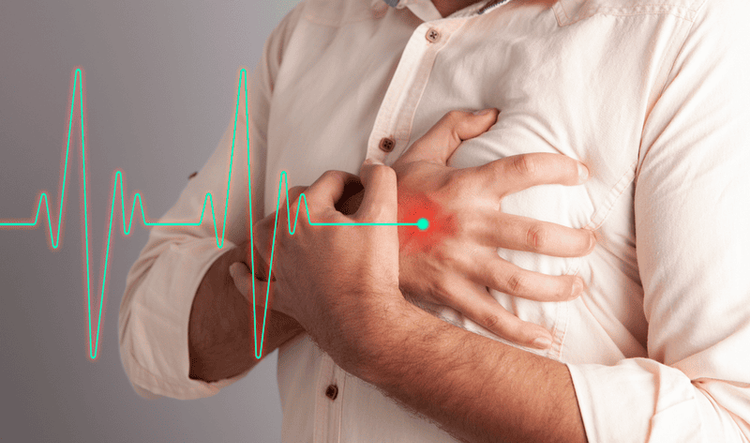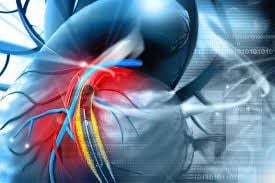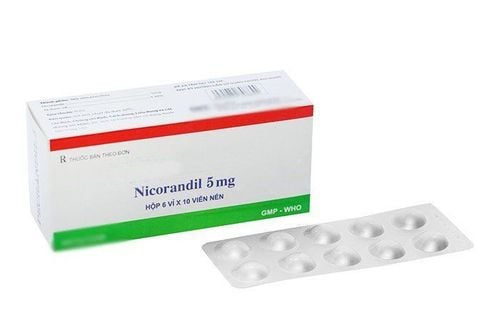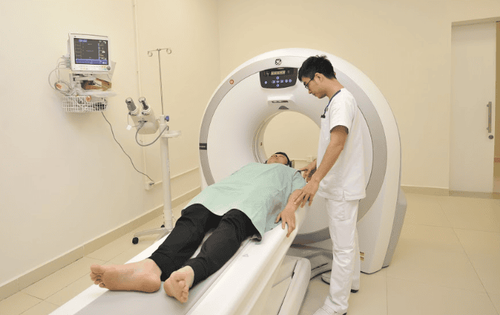This is an automatically translated article.
The article was professionally consulted by Dr. Ngo Dac Thanh Huy - Cardiologist - Department of Medical Examination & Internal Medicine - Vinmec Danang International General Hospital.Angina is one of the most common medical conditions today with the most common cause being coronary artery stenosis. Angina can be typical angina and atypical angina with different clinical manifestations. Therefore, when having angina, the patient should go to the medical facility as soon as possible to get an accurate diagnosis.
1. What is angina?
Angina is defined as a chest pain that occurs due to narrowing of the coronary arteries, which can be caused by a blockage of the blood vessels or by the constriction of the blood vessels leading to the narrowing of the coronary arteries. When the coronary arteries are narrowed, the blood supply to the heart is not enough, causing the heart to lack oxygen to pump blood to the rest of the body, resulting in a number of life-threatening cardiovascular diseases. of the patient. Therefore, angina can be one of the warning signs before a possible cardiovascular condition for the patient, should not ignore the clinical phenomenon of angina.
Angina can occur in any patient, but is more common in those with a history of cardiovascular disease. According to statistics, people such as men over 45 years old or women over 55 years old are more likely to have angina than other patients.
Some causes of angina are found as follows:
Coronary artery disease: The coronary arteries are narrowed due to cholesterol accumulation, also known as atherosclerosis.

Cardiac arrhythmias Lack of blood supply Constriction of the coronary arteries causes a significant reduction in blood flow to the heart. Some of the risk factors favorable for angina to occur are:
Elderly patient Patients with high blood pressure Patients often face stress and pressure in life Patients with blood triglycerides and elevated blood cholesterol Patients with a family history of coronary heart disease or myocardial infarction Patients with a history of tobacco use or long-term exposure to tobacco smoke Patients with Diabetes Patient is obese, lazy to exercise every day.
2. How many types of angina?
Angina includes typical angina and atypical angina with very different clinical features and nature, which should be clearly distinguished:

Typical angina Usually occurs after a patient's exertion, can be after a long distance travel, or occurs after some circumstances related to factors such as weather, after meals , after an emotional emotion... Typical angina usually appears in places such as pain behind the sternum, can spread to the jaw, neck, shoulder, hand... and then spreads to the upper region. taste.
When a patient presents with typical angina, it often feels like a squeeze or pressure, squeezing makes the patient feel like they are suffocating and there is a feeling of heaviness in the chest. Some symptoms associated with angina are shortness of breath, palpitations, sweating, anxiety, etc. Typical angina usually occurs and lasts no more than 20 years. minutes, may appear 1-2 times a year or may appear many times in just 1 month depending on the different location of each patient. After being managed with nitroglycerin sucking and bed rest, the symptoms of typical angina in patients tend to be relieved.
Atypical angina This case of angina is more common in elderly female patients with some pre-existing medical conditions such as hypertension, diabetes mellitus or dyslipidemia. Patients often have epigastric angina, the sternum then spread to the right shoulder, may spread to the position between the shoulder blades and finally to the abdomen. In contrast to typical angina, atypical angina patients often feel pain in the front of the heart, numbness in the left hand, and symptoms of choking or coughing. Atypical angina usually occurs when the patient is lying down, at rest, and usually at night.
This is considered a prodromal of acute coronary disease, so if the patient shows signs of atypical angina as above, especially when these signs are getting worse, the attack If pain appears with more intensity, lasts longer than the original, it should be noted and immediately reported to the treating doctor.
3. Treatment of angina

The principle of treatment for angina is to restore blood flow to the heart to improve the heart's activity level. Some methods of treatment for angina are applied as follows:
Prioritize rest, do not do any work during treatment Some drugs may be prescribed to the patient such as anti-stop drugs. platelet aggregation Aspirin, drugs to widen narrowed blood vessels Nitroglycerin, beta-blockers to regulate heart rate, relax the heart muscle, drugs to regulate blood pressure, drugs to treat diabetes, treat dyslipidemia. ... Surgical method: The patient is inserted a catheter into the coronary artery to conduct angioplasty, then a coronary stent is placed to help the blood vessel be opened wide, blood can flow through without encountering any problems. congestion condition. In addition, coronary bypass surgery can be applied in some patients. Angina is a fairly common disease today, especially in patients who are elderly and have some chronic underlying medical conditions. Angina can be one of the factors leading to cardiovascular disease, directly threatening the patient's life, so it should be detected early and treated properly.
To protect cardiovascular health in general and detect early signs of myocardial infarction and stroke, customers can sign up for Cardiovascular Screening Package - Basic Cardiovascular Examination of Vinmec International General Hospital . The examination package helps to detect cardiovascular problems at the earliest through tests and modern imaging methods. The package is for all ages, genders and is especially essential for people with risk factors for cardiovascular disease.
Please dial HOTLINE for more information or register for an appointment HERE. Download MyVinmec app to make appointments faster and to manage your bookings easily.














